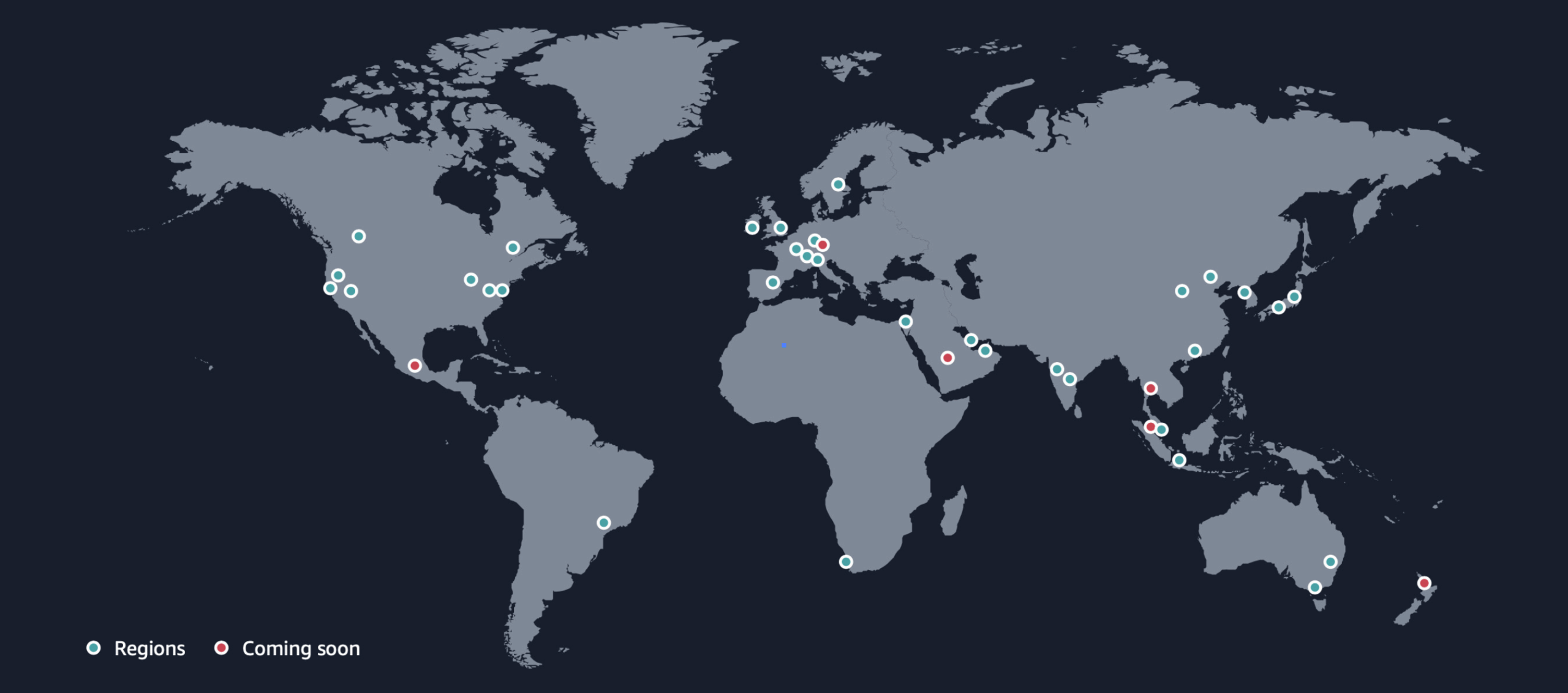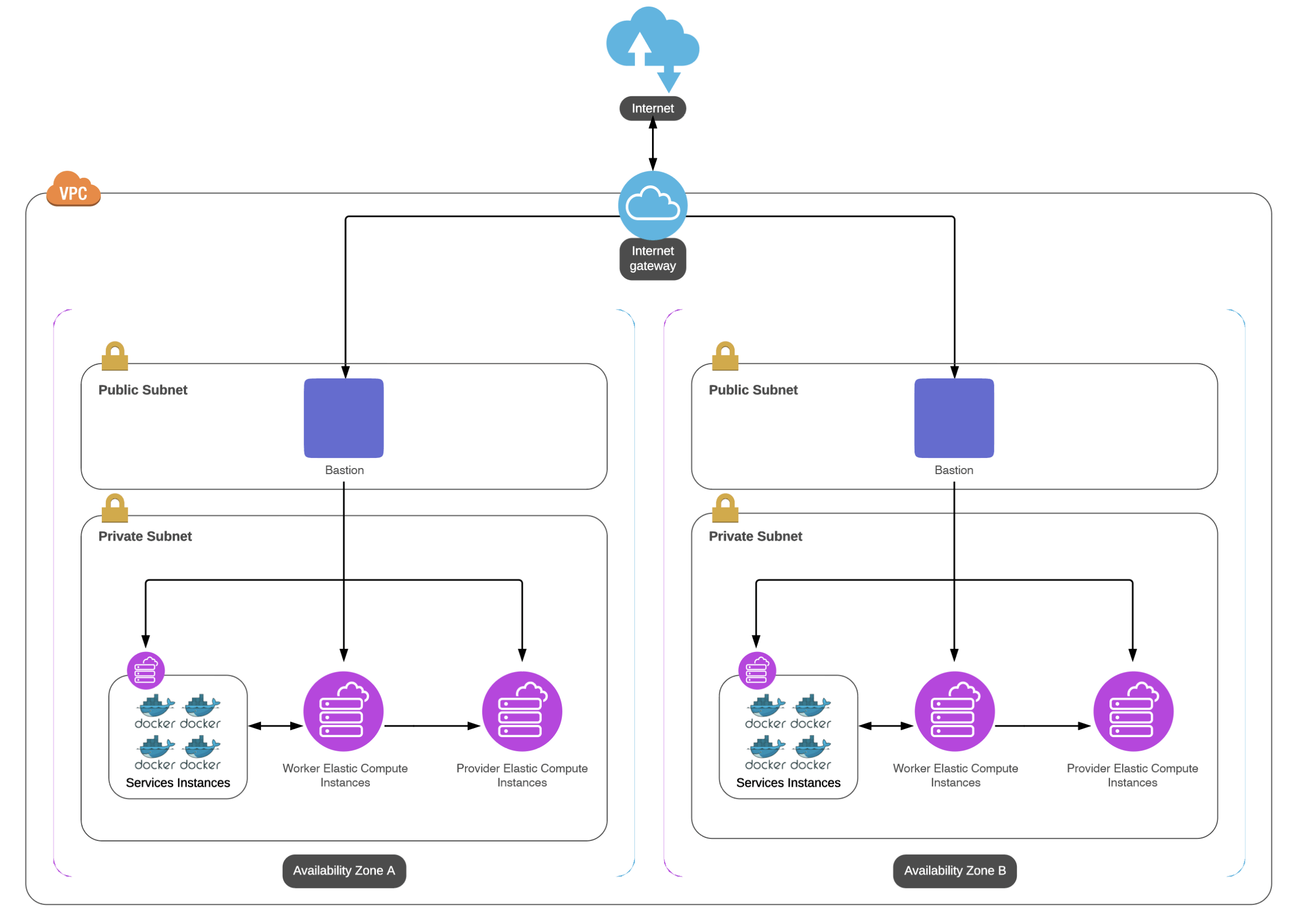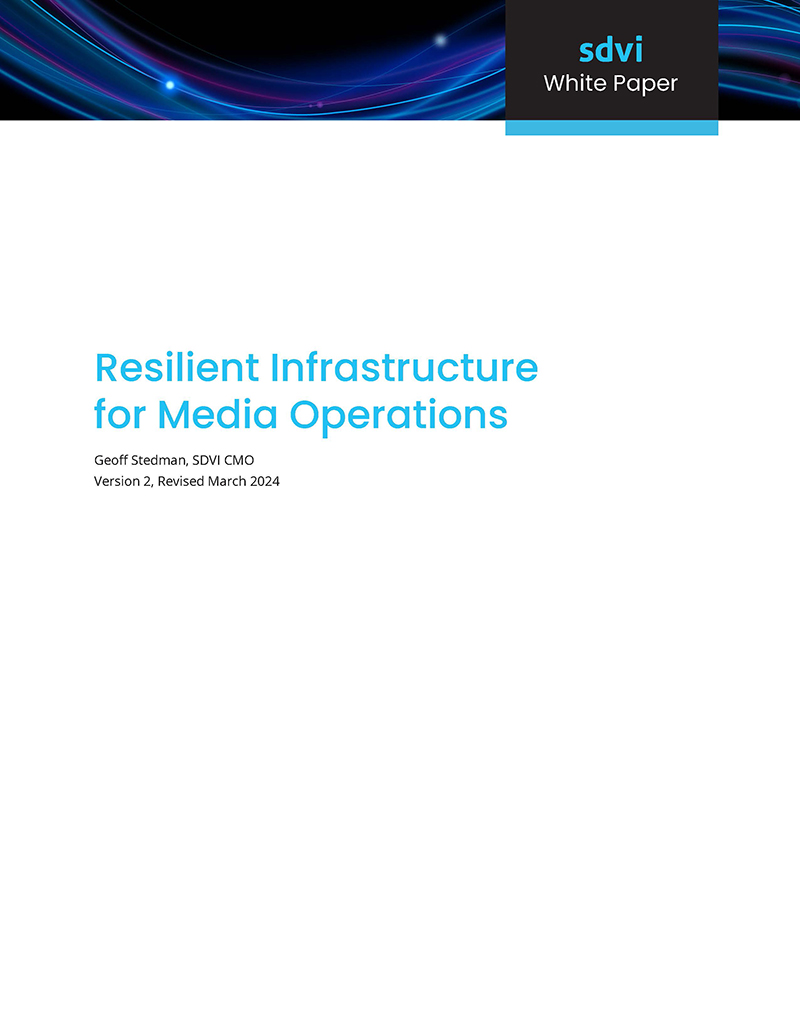Summary
This white paper by Geoff Stedman (SDVI CMO) explains how SDVI’s Rally media supply chain platform leverages cloud architecture to ensure high availability, redundancy, and business continuity for media supply chains—at lower cost and greater scalability than traditional on-premise systems.
Key Points:
- Reliability Goal: Media operations evolved from broadcast standards requiring 99.999% uptime, demanding robust and redundant systems.
- Cloud Advantage: Built-in multi-region and multi-AZ resiliency with encrypted, low-latency connections support synchronous replication.
- SDVI Rally Architecture: Each customer receives a Rally silo, typically two (production and staging); large media firms use multi-AZ setups for continuous operation.
- Deployment Scenarios:
- Single AZ: Lowest cost; jobs auto-restart after outage; charges only for completed jobs.
- Multi-AZ: Active load sharing; no downtime if one AZ fails; no inter-region charges.
- Multi-Region: Highest resilience; duplicate silos in different regions; higher cost due to inter-region data sync.
- Multi-Region Sync: Enables bidirectional synchronization—assets searchable across silos even during outages.
- Certifications: Rally meets AWS Foundational Technical Review and Well-Architected standards; includes nightly backups and no single point of failure.
- Business Impact: Provides 24/7 continuity, eliminates physical backups, scales elastically, and aligns protection levels with SLA and budget needs.
Introduction
Media companies require secure and robust infrastructure that is resilient even when failures or
disasters hit. The requirement for robust, redundant infrastructure grew from broadcast operations
that wanted better than 5 nines of availability (99.999% uptime). While their media supply chain
infrastructure is perhaps not quite as sensitive as on-air broadcast infrastructure, the demands for
content across multiple delivery platforms has elevated the need for resilient supply chains as well.
A common technique used by media companies to achieve their availability goals is to maintain
redundancy…redundant infrastructure deployed across redundant locations. Many built a primary
facility with main and backup systems, along with a second facility geographically separated with yet
another backup system. This level of redundancy did work to maintain availability when something
failed or a disaster struck, but it is fundamentally expensive, hard to manage, and inhibits the agility
these companies need to respond to market changes.
The cloud, with its natural redundancy and geo-diversity, gives media companies another option to
deploy reliable and highly-available media supply chain infrastructure. In fact, cloud infrastructure
can be as, or more, reliable and available than what media companies previously built themselves –
without the cost and hassle of building and maintaining data centers, and without the waste. Cloud
services can now provide the same level of business continuity at a fraction of the cost of previous
continuity strategies.
In this paper, we will review how the SDVI Rally media supply chain management platform takes
advantage of cloud resiliency features to ensure that media supply chains continue to function in
the event of a disruption.
The cloud-native SDVI Rally media supply chain platform enables customers to migrate their
media supply chains to the cloud with built-in business continuity, ensuring your supply chains will
continue to run, even during an emergency. Rally can maintain duplicate redundant instances of all
core services across availability zones in order to avoid any interruption of service during a failure.
This well-designed resilience strategy means there will be very little impact to your business should
an emergency occur.
Single vs. Multi Availability Zones
Before we get into the Rally architecture, it will help to first understand how the AWS cloud is set
up to support resiliency. The AWS cloud is first organized into Regions. For example, the United
States is divided into seven geographic regions, such as Northern Virginia, Northern California, Ohio,
and Oregon to name a few. A Region is made up of a number of isolated and physically separate
Availability Zones (AZ’s). Each AZ has one or more discrete data centers with redundant power,
networking, and connectivity, which gives customers the ability to operate production applications
that are more highly available, fault tolerant, and scalable than would be possible from a single data
center. All AZs in an AWS Region are interconnected with high-bandwidth, low-latency networking,
over fully redundant, dedicated metro fiber, and all traffic between AZs is encrypted. Because
network performance is sufficient to accomplish synchronous replication between AZs, it makes
partitioning applications for high availability easy, which better protects those applications from
disruptions caused by power failures, lightning strikes, tornadoes, earthquakes, and more.
When we first configure Rally for each customer, we provide a self-contained Rally instance with
all the services that support it. We call these a Rally Silo. Customers have at least two Silos at their
disposal; a production environment, and a staging/non-production environment. These will be
configured either as a single or multiple Availability Zone installations. Typically, most large media
companies will deploy their production system in a multi-Availability Zone configuration.
Depending on your organization’s needs, you may want more silos for DEV or QA groups. Nonproduction
systems like these generally do not have the same SLA demands as the production or
staging environments, so they can be configured for a single AZ.

Figure 1) AWS Global Infrastructure Map
Practical Considerations
In a single AZ deployment, if there is a disruption to that AZ, jobs running in Rally may be interrupted
for as long as the AZ remains impacted. Once the AZ is back online, Rally will restart any workflow
which had not completed. There could be a small delay as work needs to be restarted once the cloud
provider resolved any issue and as always, customers only incur charges for completed jobs.
In a multi-AZ deployment, instances of the Rally services are running and actively sharing load across
multiple Availability Zones. If there is a disruption to one AZ, Rally will immediately re-route the
workorder to another AZ. Customers would see no impact because Rally actively switches work over to
another available AZ. There are no cross-region charges because both AZs are within the same Region.

Figure 2) SDVI Rally AWS Silo Architecture
Multi Region
In addition to the multi-AZ approach discussed above, there may be reasons to utilize multiple
AWS Regions for Rally deployments. Customers have the ability to locate Rally-managed storage
locations and provider pools across different AWS Regions (or different Cloud providers) with the
goal of providing both resilience and the ability to process jobs in the Region where the content is
located. For global media companies receiving and distributing content in multiple regions of the
world, this approach keeps supply chain processing in the same Region where the content resides
(minimizing inter-Region data transfers). In the unlikely event that a Region goes down, all supply
chain processing could be reassigned to the Region that remains operational.
It is also possible to provision multiple discrete Rally silos in different Regions, each providing active
capabilities, but separate from each other. Users would need to log into each system separately,
and the two systems would not be centrally managed, although they could move content and data
between them (albeit incurring inter-Region data egress costs).
Finally, using the new feature of Rally Multi-Region Sync you can have two (or more) silos in two (or
more) different regions that sync bidirectionally. Users can search and view information for assets
in all silos, even if the remote silos have outages. This is accomplished through data replication,
where the search indices are continuously copied between all silos. Capabilities gained by going
this direction include but are not limited to, searching for remote assets by name and metadata;
viewing remote asset name, status indicators, and metadata; getting a hyperlink that goes directly
to the asset page on the remote silo; viewing a list of remote silos and their sync statuses for
administration purposes. All of this is achieved through relatively simple configurations between the
different silos. It also means silos in each region can be actively used with the content in that region,
and synchronize their data with each other.
Reliability of Rally
The Rally architecture has been through multiple AWS reviews and certifications, including the AWS
Foundational Technical Review and Well-Architected Review processes, and is designed so that there
is no single point of failure. In addition to the Availability Zone configurations to enhance reliability
and availability discussed above, each Rally silo is backed up nightly, ensuring that all supply chains
and provider presets can be restored in the event of a critical outage.
Each of the three different disaster recovery options includes trade-offs between availability and
cost, depending on which level of service is provisioned for a Rally deployment.
Scenario one: Single Availability Zone – provides the lowest cost, and a more restrictive
SLA. If the AZ were to go offline, all jobs would be automatically rescheduled after the zone
came back online. Because of the nature of cloud services, were this to happen, once catchup starts on any jobs which were not completed, they will be executed on as many EC2
instances as needed. This is the most affordable option.
Scenario two: Multi-Availability Zone – provides distributed storage and providers across
zones. This approach yields better resiliency and scalability, and is often used for large
volume processing where the SLA has contractual delivery requirements. Multi-AZ provides
a shared, load-balanced approach for a Rally system across two or more Availability Zones. If
one AZ goes offline, Rally will automatically allocate jobs to the AZ(s) that remain online.
Scenario three: Multiple Region Availability – provides resources running on separate Rally
silos across Regions. Discreet silos can be provisioned in different Regions, each providing
duplicate, active capabilities. The different silos would synchronize bidirectionally with each
other, and would be available to take on workloads when notified if an entire region had
failed. This scenario would require a full duplication of the scheduled active workload. This
option is the most expensive due to potential inter-region data transfers required to keep
content in both regions.
Conclusion
Rally is architected to provide 24/7 availability with automated backups and options for redundancy.
There’s no need to operate another physical backup environment which requires service contracts,
perhaps third-party management, and real estate costs. Rally offers near-infinite cloud scalability
for media supply chain operations, which also extends to business continuity using a cloud-native
architecture.
You can now make choices about what is appropriate based on SLA requirements, budgets and
how critical your media content processing factory is to your business. By gaining the technical and
business agility that comes with a solid business continuity strategy, there will never be a danger of
having a catastrophe take down supply chain operations.

